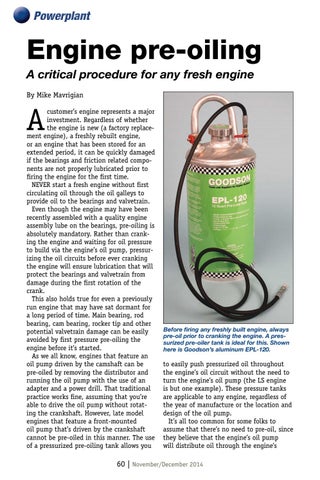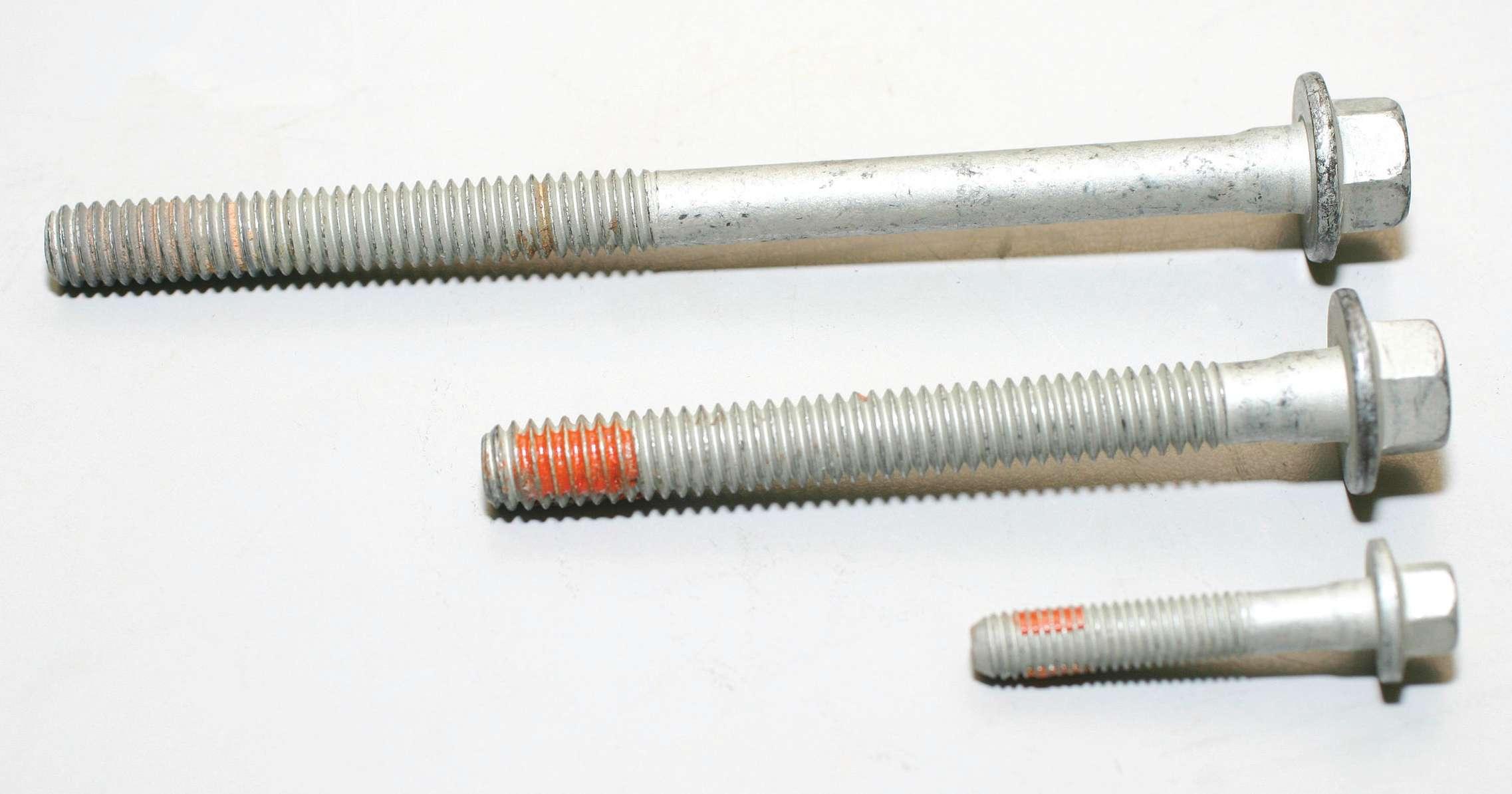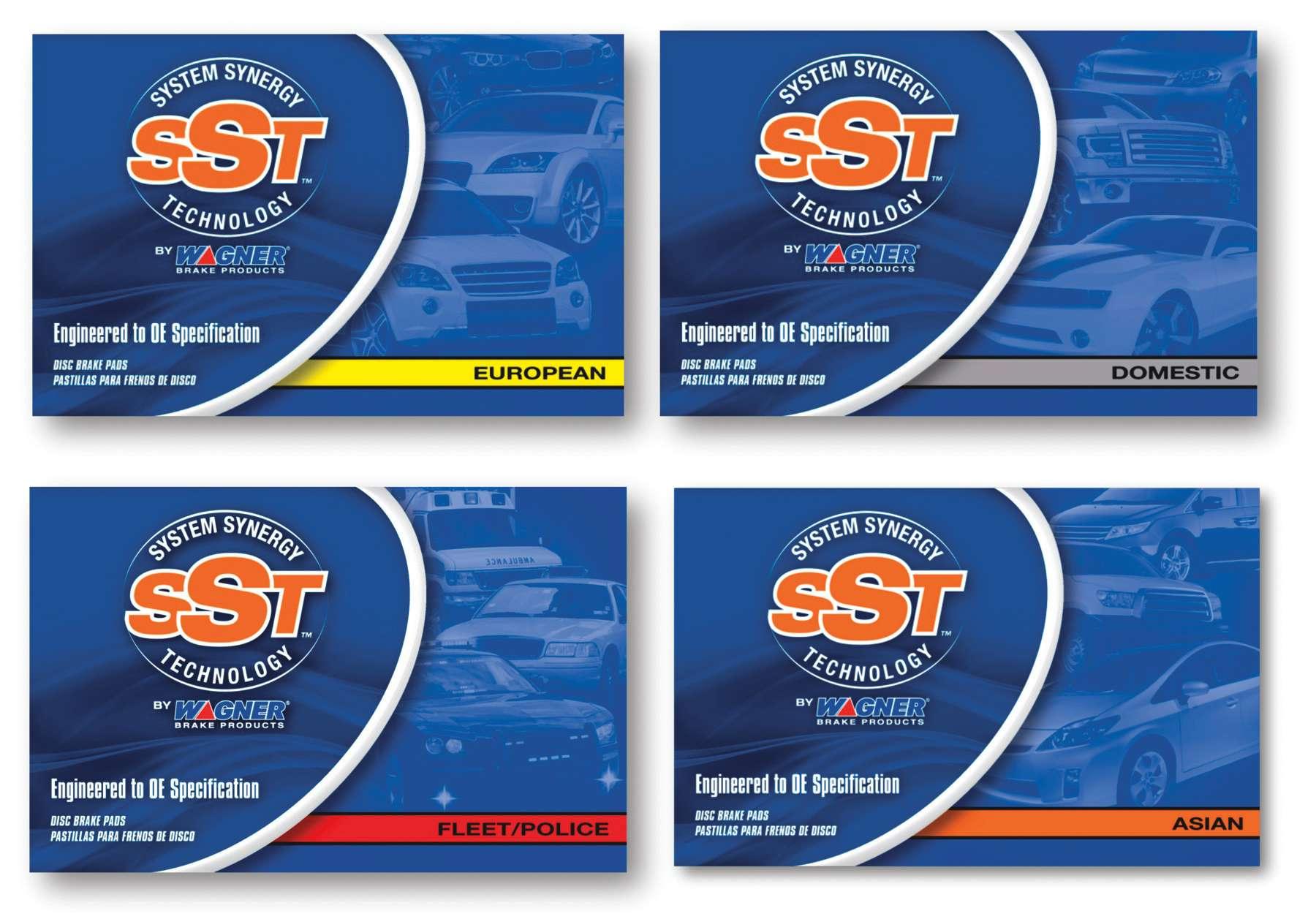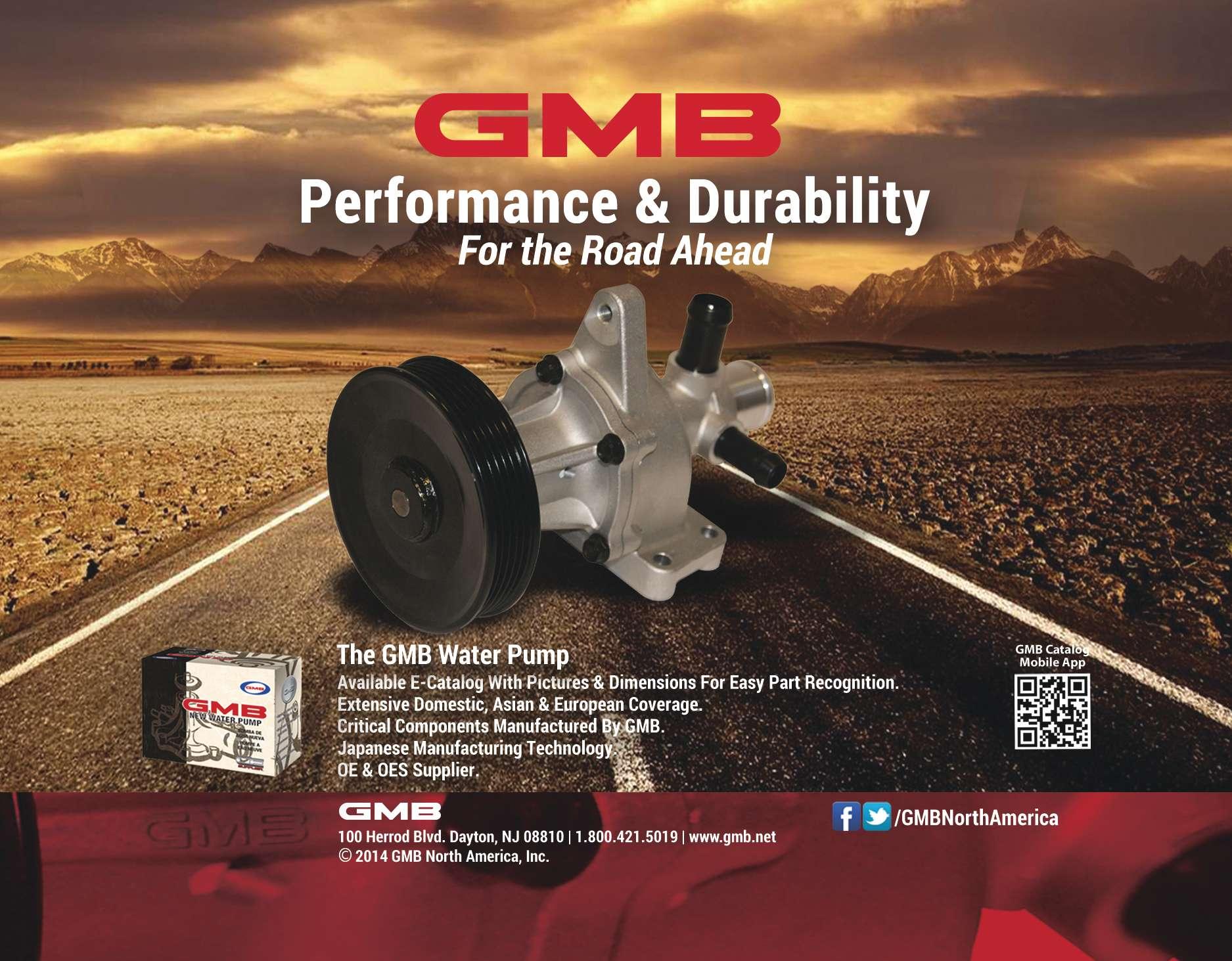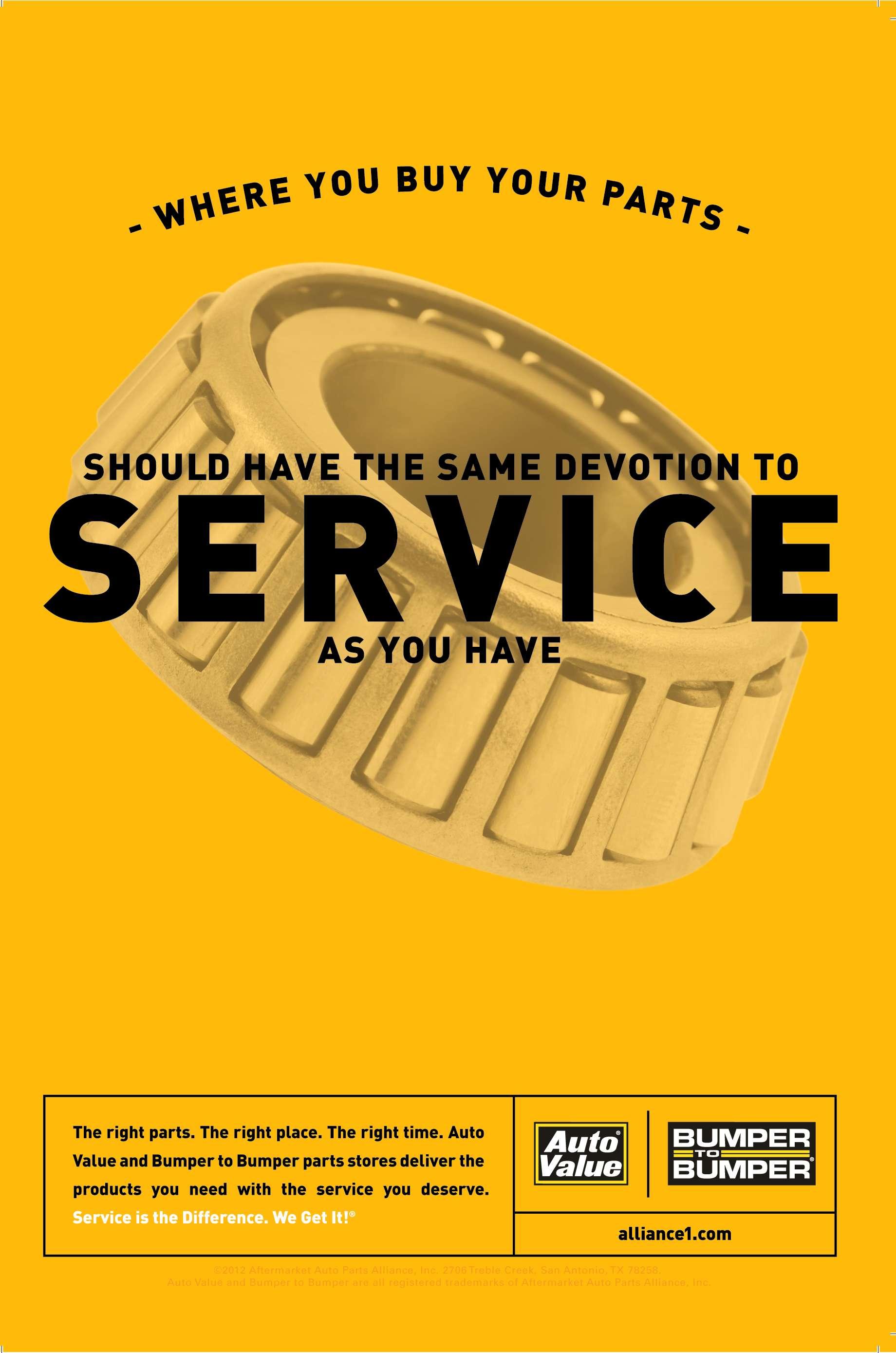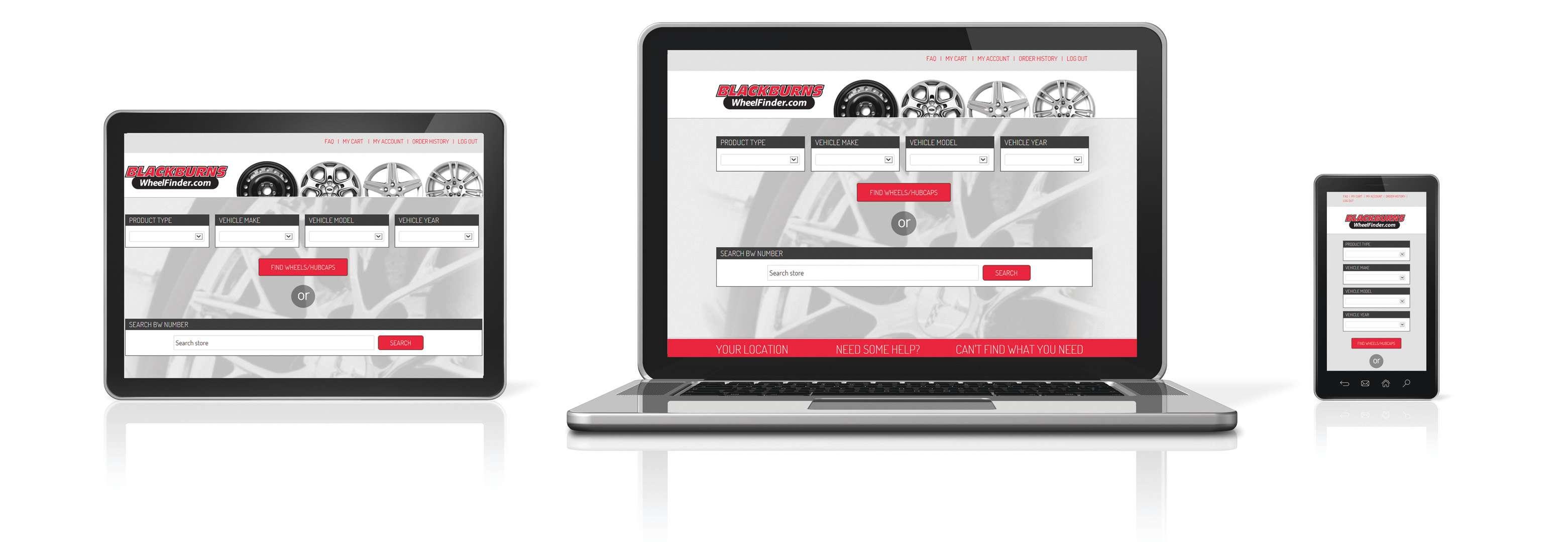Engine pre-oiling A critical procedure for any fresh engine By Mike Mavrigian
A
customer’s engine represents a major investment. Regardless of whether the engine is new (a factory replacement engine), a freshly rebuilt engine, or an engine that has been stored for an extended period, it can be quickly damaged if the bearings and friction related components are not properly lubricated prior to fring the engine for the frst time. NEVER start a fresh engine without frst circulating oil through the oil galleys to provide oil to the bearings and valvetrain. Even though the engine may have been recently assembled with a quality engine assembly lube on the bearings, pre-oiling is absolutely mandatory. Rather than cranking the engine and waiting for oil pressure to build via the engine’s oil pump, pressurizing the oil circuits before ever cranking the engine will ensure lubrication that will protect the bearings and valvetrain from damage during the frst rotation of the crank. This also holds true for even a previously run engine that may have sat dormant for a long period of time. Main bearing, rod bearing, cam bearing, rocker tip and other potential valvetrain damage can be easily avoided by frst pressure pre-oiling the engine before it’s started. As we all know, engines that feature an oil pump driven by the camshaft can be pre-oiled by removing the distributor and running the oil pump with the use of an adapter and a power drill. That traditional practice works fne, assuming that you’re able to drive the oil pump without rotating the crankshaft. However, late model engines that feature a front-mounted oil pump that’s driven by the crankshaft cannot be pre-oiled in this manner. The use of a pressurized pre-oiling tank allows you
Before fring any freshly built engine, always pre-oil prior to cranking the engine. A pressurized pre-oiler tank is ideal for this. Shown here is Goodson’s aluminum EPL-120.
to easily push pressurized oil throughout the engine’s oil circuit without the need to turn the engine’s oil pump (the LS engine is but one example). These pressure tanks are applicable to any engine, regardless of the year of manufacture or the location and design of the oil pump. It’s all too common for some folks to assume that there’s no need to pre-oil, since they believe that the engine’s oil pump will distribute oil through the engine’s
60 | November/December 2014
